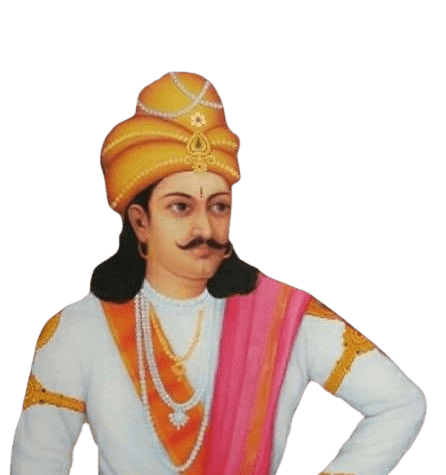Life and achievements
Early life
Ashoka was born in 304 BCE in Pataliputra, the then capital of the Maurya Empire and a kingdom of India, to Bindusara and his chief queen, Subhadrangi. He was one of several sons raised in a royal family and received education and training in administration and martial arts. His childhood and adolescence were spent obtaining a strict education and training in managing kingship and the art of war.
Ashoka's early life was spent in the Mauryan court, a learning and political administration center. Although his father was biased toward his elder brothers, Ashoka's talents were soon revealed, and he was given important administrative positions. He was posted to Ujjain and then responsible for suppressing a revolt in Takshashila, which he did with finesse.
His early political career as a governor and military commander gave him insight into governance and how hard it was to rule over a large empire. These formative years also made him experience the different cultures and people within the Mauryan Empire, and thus, he learned to accept everyone. It is not impossible that the brutal nature of warfare and politics during his youth paved the way for the philosophical and empathetic approach that he would bring to the throne.
Ashoka's early life was not without some crises and problems. He came to the throne through an inheritance struggle, which entailed dynastic rivalry and power struggles. Nevertheless, the early victories in governance and military management allowed him to rise to the throne. His experiences in this period also prepared him for the significant change that was to happen to him after the Kalinga War.
Legacy
Ashoka left behind one of the most remarkable and far-reaching records of any ruler in Indian history and of the spread of Buddhism. He is one of the most celebrated kings who ruled his kingdom with the principles of morality and the well-being of his people. The policies and reforms that he introduced in the administration and society left a long-lasting impression in India.
Ashoka's reign is considered one of the most important as he played a crucial role in spreading Buddhism. He contributed immensely to the propagation of Buddhism in Asia and, thus, the growth of the religion. Ashoka's patronage of Buddhist establishments, including the building of stupas and viharas, helped spread the religion. He also supported the Third Buddhist Council, which can be considered the unification of Buddhist society and its doctrines.
The king's focus on good governance is evident among the many mandates of Ashoka engraving rocks and pillars across the empire. These mandates, which promoted nonviolence, compassion, and religious tolerance, have been very useful in providing information on the history and culture of the society. These are his ideals of a society he wants to create: a just and peaceful society that follows Dhamma.
Ashoka also left behind the emblems of his rule, the Lion Capital of Ashoka and the Ashoka Chakra. The Lion Capital, which is the current national emblem of India, and the Ashoka Chakra, which is on the Indian flag, testify to his commitment to Indian heritage. These symbols highlight the continuing relevance of his ideas and principles to contemporary India.
Even though the Maurya Empire diminished after Ashoka the Great's death, later generations remembered his greatness. His focus on proper governance and social justice remained relevant for years and influenced many leaders and philosophers. Thus, AAshoka'sreign remains one of the brightest examples of how compassion and moral leadership can change history.
Milestone moments
May 5, 286
Ashoka came to power and became India's third ruler of the Maurya dynasty.
This was the starting period of his rule, which was associated with military achievements and administrative changes.
At the beginning of his rule, Ashoka was a rather imperialist ruler who aimed to increase the size of the empire and strengthen it.
Feb 5, 260
Ashoka fought the Kalinga War, one of his reign's significant wars.
The war was ruthless and caused many deaths and pain, significantly changing Ashoka.
The war's effects made Ashoka feel remorse and changed his administration's face.
Jul 17, 258
Ashoka adopted Buddhism and changed his direction and his rule.
He applied Buddhist teachings to his rule, including nonviolence nonviolence, compassion, and righteous rule.
This period witnessed the release of his edicts on rocks and pillars throughout the empire.
Jun 5, 250
Ashoka called the third council of Buddhism at Pataliputra.
The council was intended to collect and organize the Buddhist teachings so that they would be protected and spread.
Ashoka's support of the council helped in the growth and propagation of Buddhism.
